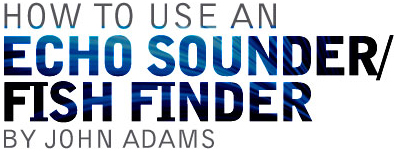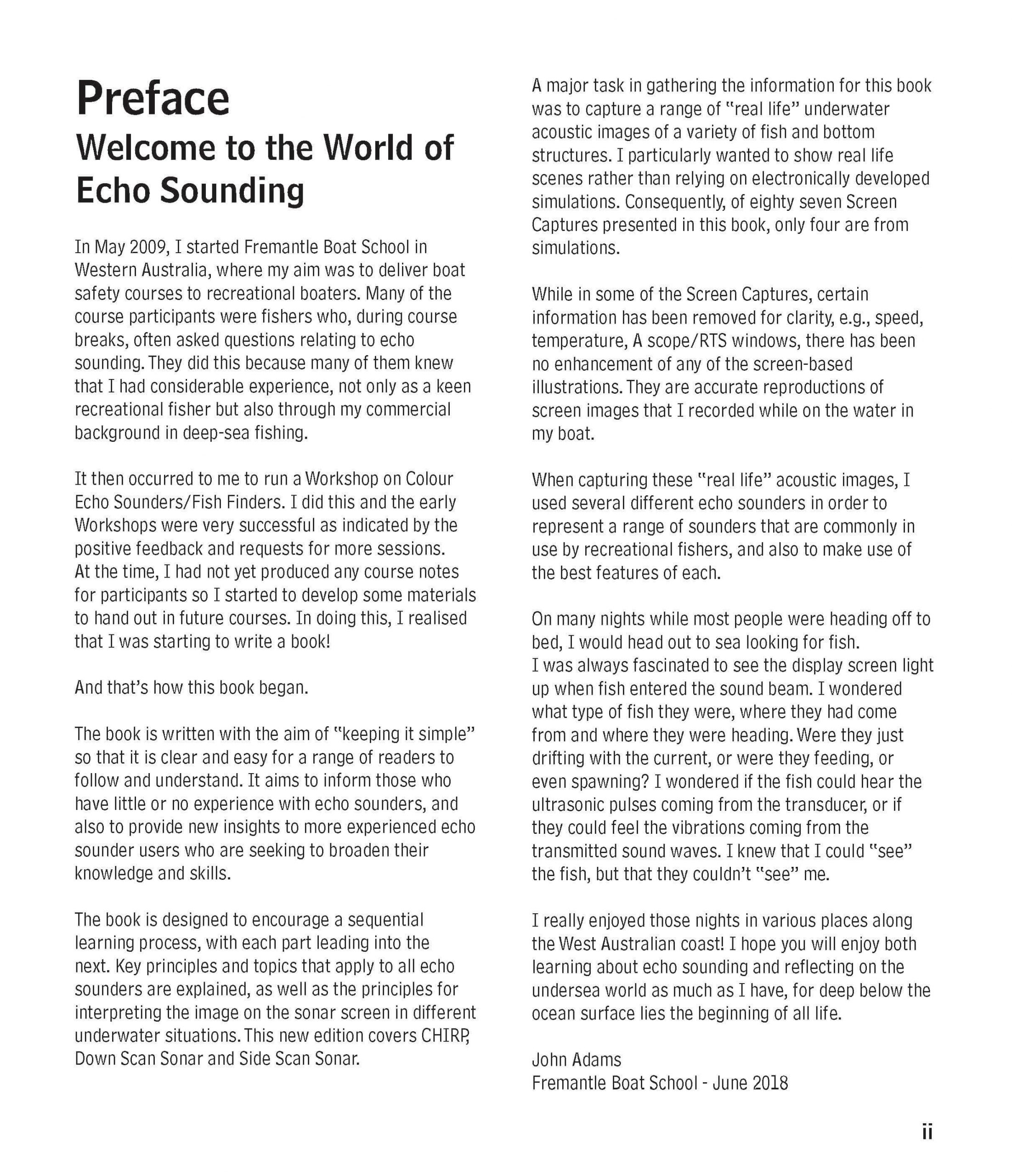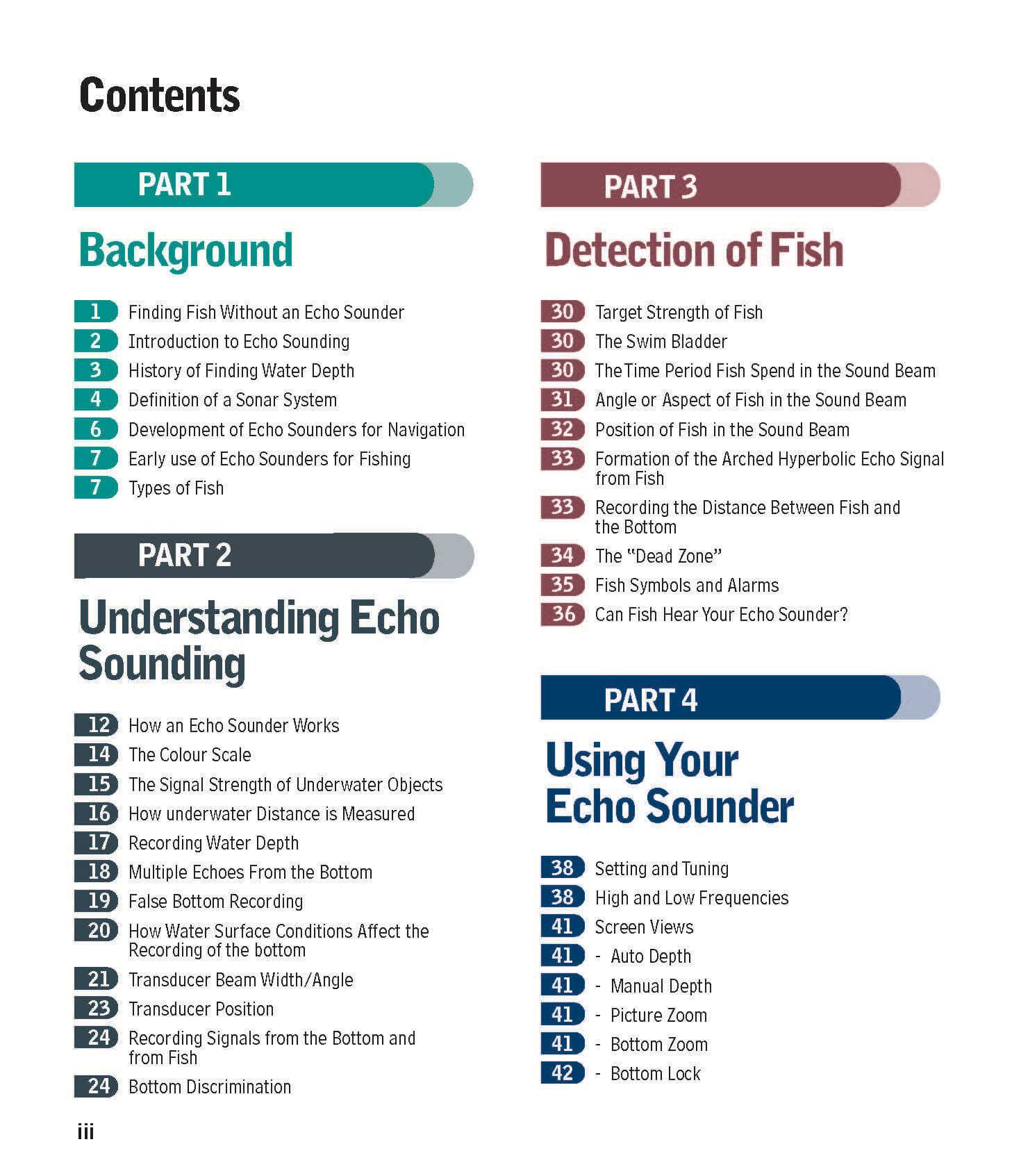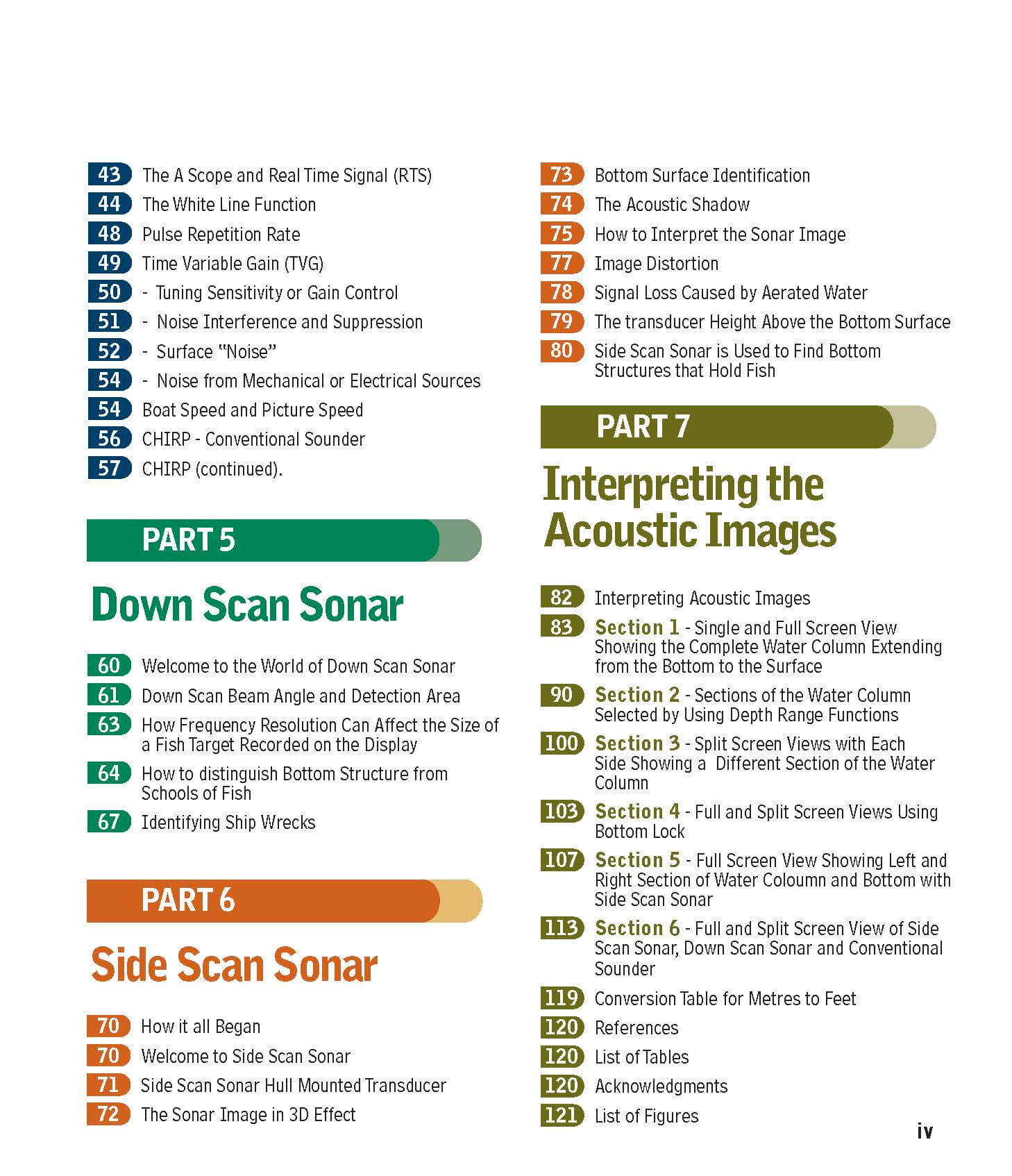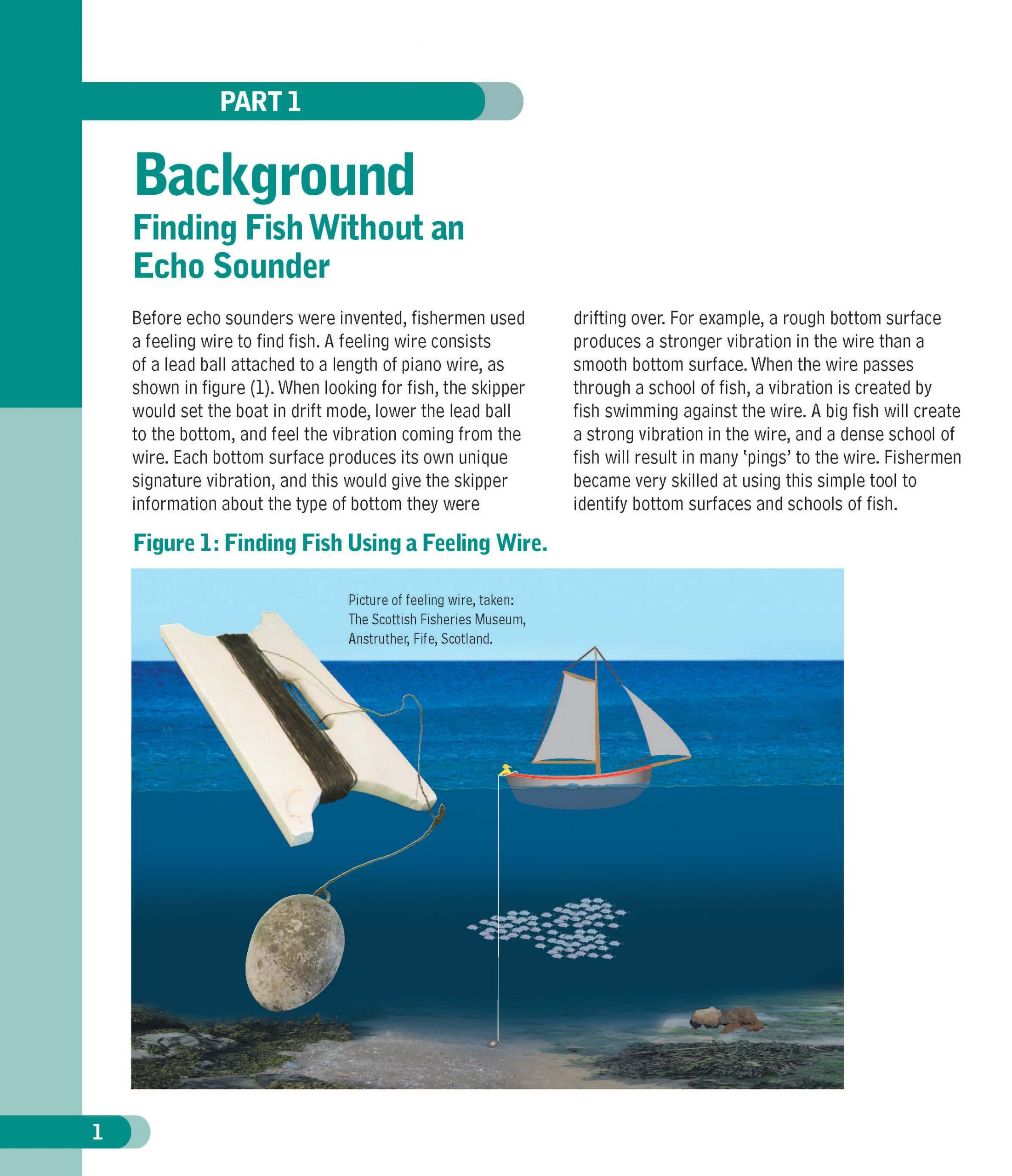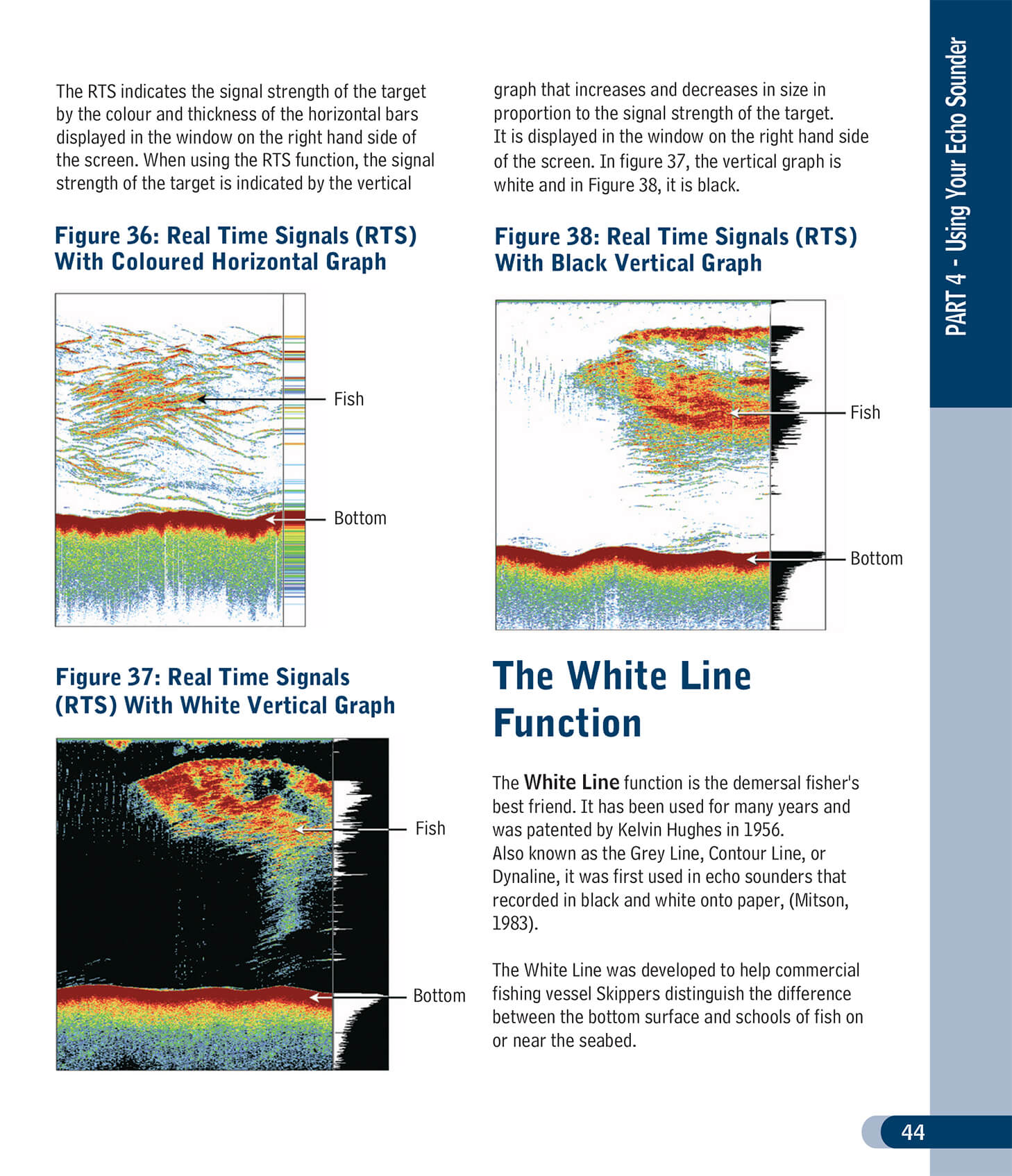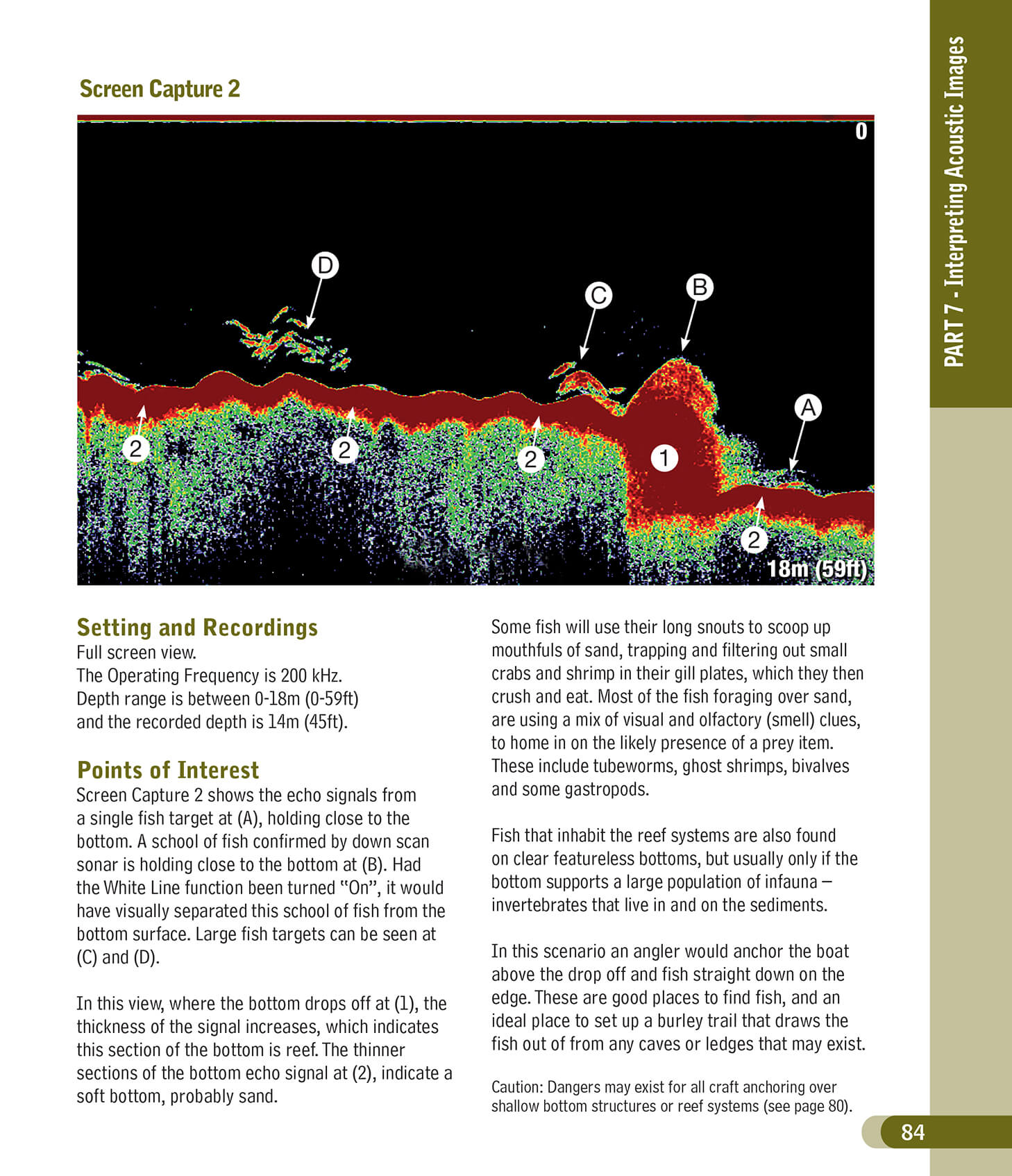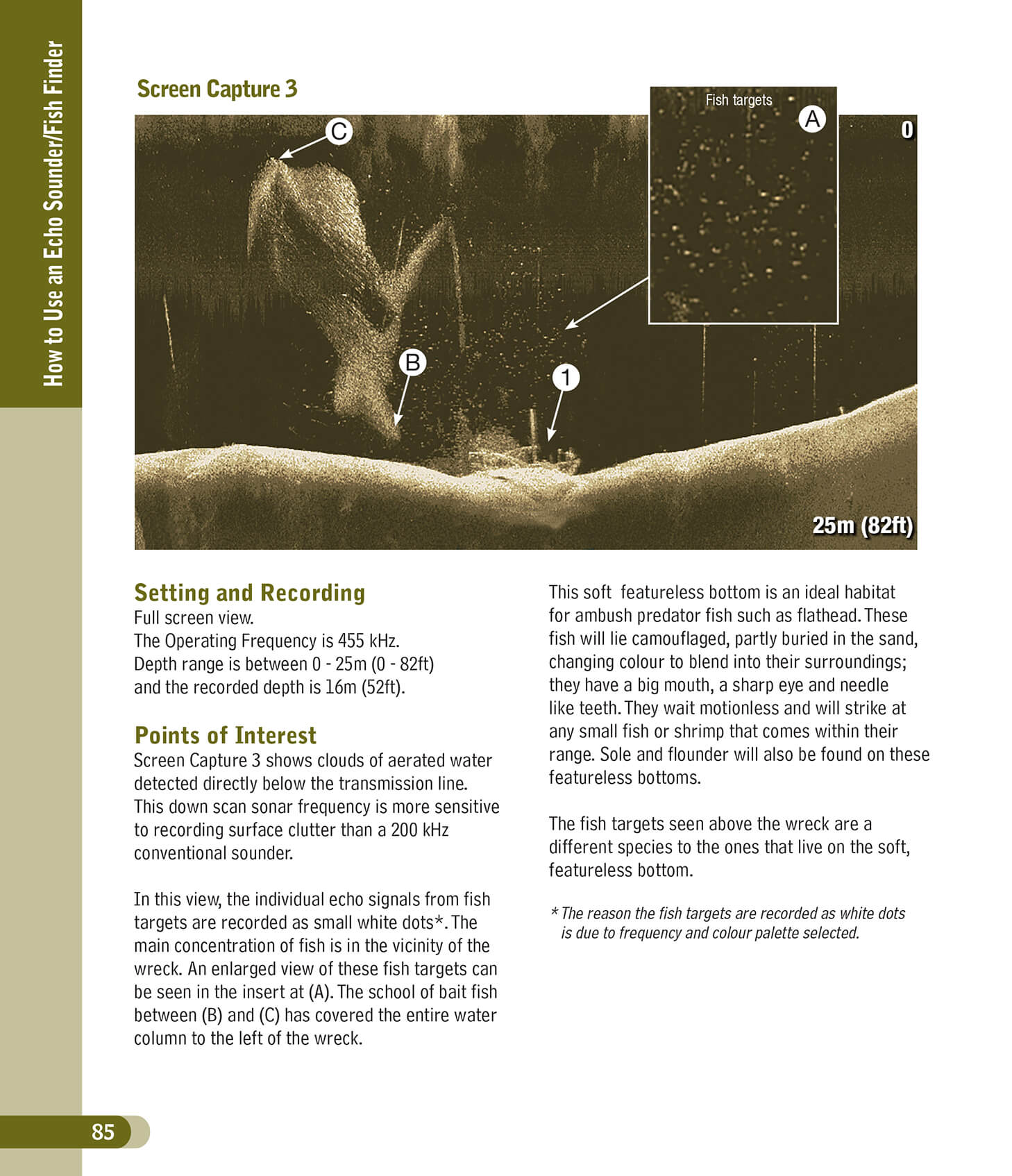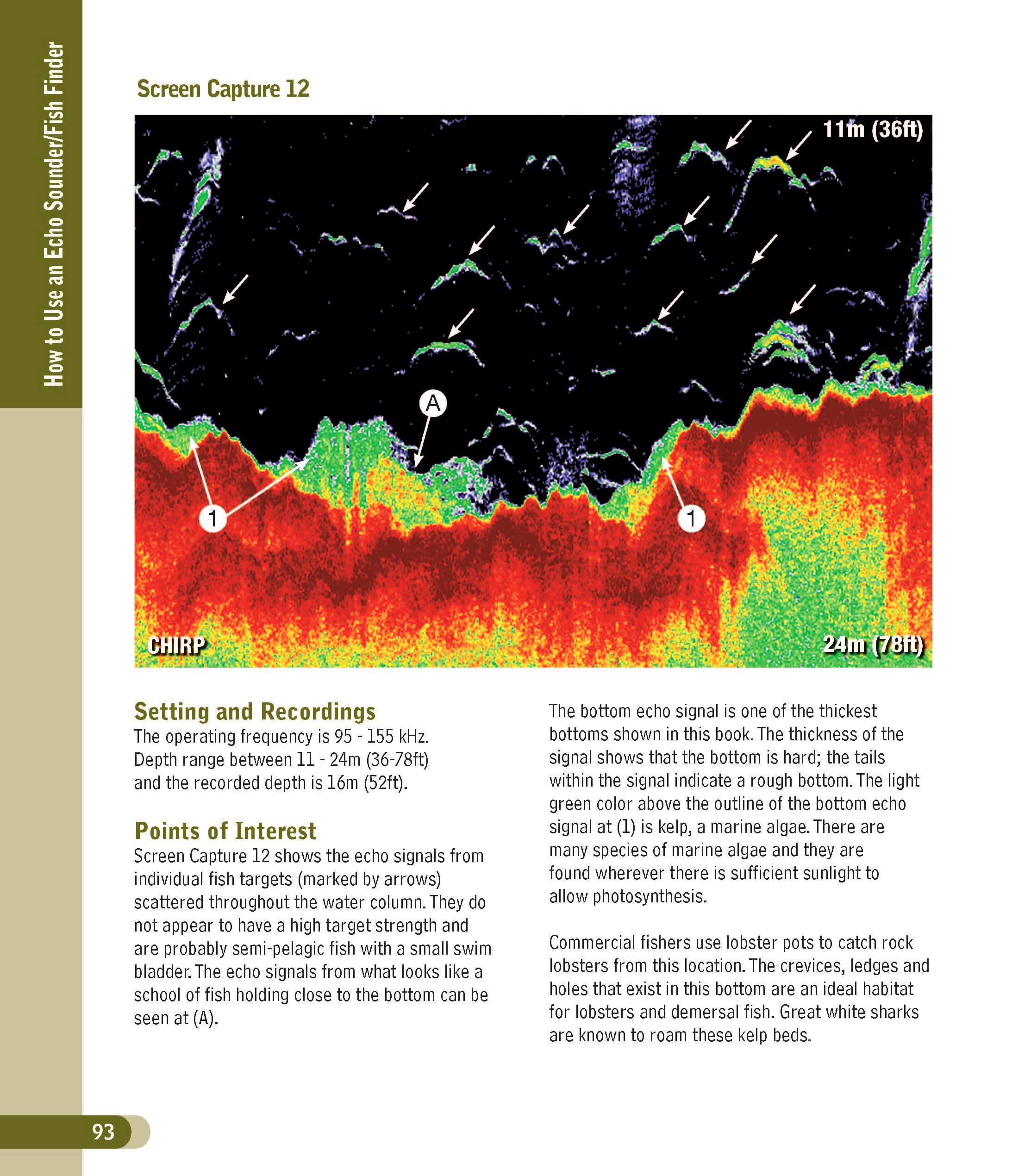Echo Sounder FAQs
Find the answers to the most common echo sounder questions.
John Adams has been running echo sounder workshops for many years and is often asked these same questions by attendees. If you currently own an echo sounder or are considering buying or upgrading your existing echo sounder, John’s answers will give you some food for thought.
There is always much debate about who manufactures the best echo sounders. Because of this, I try to avoid answering this question as it’s best to let people make their own informed decisions. That’s one of the reasons I wrote How To Use An Echo Sounder Fish Finder, to give fishers a more expanded view of echo fishing that will better equip them to do their own research and choose a sounder that’s right for them, and that suits their intended application.
Firstly, what is its purpose, and what is it going to be used for? Is it just for finding water depth, or specifically for fishing?
If it’s only for finding water-depth, then a small digital depth sounder with no display screen will do the job. These devices continually record water depth by a digital read-out only; some models can record depths up to 360 meters. There are also depth sounders designed for large ships which are used for safety/navigational purposes.
If the intention is to use an echo sounder for fishing and identifying fish targets and bottom structure, then the echo sounder needs to be specifically designed for that purpose.
On my small boat I switch between both Humminbird and Ray Marine. I like using both of them, however I tend to use the Humminbird the most because it has a quick snap on/off release on the head unit. This feature makes it easy to take off the boat for security purposes.
It is handy to have a large display screen on the boat, but for many small boat owners this is not a reality because of the cost, and in many cases there is no room to fit one. This is not a major issue because echo sounders designed for fishing have a range of display screen viewing options that allow the screen to be enlarged, expanded or zoomed within any section of the water column.
One example is when I am targeting demersal fish in, say, 40 meters, I will set the display screen on a full screen to start with, for example 0 – 50 meters. Then, when I detect fish targets or a bottom structure I want to have a closer look at, I switch over to picture zoom, bottom zoom, marker zoom, or bottom lock to have a look at the targets on the display screen before deciding whether or not to drop a line on the spot.
When I am fishing for pelagic fish in the upper-mid section of the water column, I will switch over to a screen view that allows me to set the depth range in any section of the water column, for example from 20-80 meters. In rough weather conditions the recording of the seabed can become ambiguous, due to the boat heaving and pitching, rising and falling over the swell and waves. I will then switch over to Bottom-Lock, where fish targets are more clearly recorded above the seabed Bottom-Lock line. Some fishers, including myself, prefer to use the seabed Bottom-Lock function, even in flat, calm conditions.
Low frequencies (83/50/28 kHz) are selected in deeper water-depths, and will produce less resolved screen pictures. The depth-range at which these frequencies can be operated is not as restricted due to their low acoustic absorption loss through the water during transmission. Their operating range is determined by the performance level of the transducer. Sounding in water-depths of 200 – 600 meters will only be achieved by using a high performance transducer.
It is common to detect a school of fish on the display, then immediately turn the boat around to locate them, only to find they have disappeared. In this situation two things could have occurred: (1) the fish moved outside the circumference of the beam, they swam off; or (2) the position of the fish at the time of detection could have been to the front, rear or either side of the boat. Yet, all the fish targets recorded within the circumference of the beam would have been all recorded on the display screen at the same time, because they would have been all in the same detection area.
Sound waves transmitted in deep water have a high acoustic distortion loss. Because of this, the echo signals returning back to the transducer from fish targets will often be weak. Time Variable Gain function amplifies those weaker signals, and ensures they are detected on the display screen.
Time Variable Gain function is quite often misunderstood. For example, I was recently talking to a commercial demersal fisherman who was fishing between 200 – 350 meters. He was showing me the setting on his sounder; he uses 50 kHz at that depth. I was interested in his Time Variable Gain settings, and noticed that it was set on 200 KHz. I asked him how long it had been set on 200 KHz for and he said 9 years! I tried to convince him to turn it over to 50 KHz, but he did not like the idea. His comment was that the sounder was working fine the way it was and he had no intention of changing any of the settings. He obviously did not understand the function.
The density of a fish is similar to that of water, and because of its elliptical shape, a fish does not provide a very good aspect for an echo to reflect off. Research suggests that one of the major contributors to the target strength of the fish is the swim bladder, which contributes to approximately 50% of the signal strength of the return echo recorded on the display screen, yet the swim bladder represents only 5% of the body mass. The aspect of a fish in the beam and where the fish is located in the beam (centre or edge of the beam) also affect target strength.
Yes, lots of times but this one outing has stuck in my mind. Peter Golding (The Fishing School) and I once went on a fishing trip off the Western Australian coast. We launched the boat off the beach and headed out to some of the best fishing grounds Western Australia has to offer. I know this particular ground really well; it’s abundant with dhufish, pink snapper, belching groper and samson fish. The day was perfect for fishing, with 5-10 knot winds and low swell. Using the echo sounder, we found a section of bottom structure in 43 metres of water. The boat was anchored above it and we could see the echo signals from large fish on the display screen.
We were right on the fishes’ peak feeding time. The lines were baited with octopus and whole sardines and dropped over the side. When the sinker touched the bottom we waited for a bite, without any results! The boat was moved to several different locations over a period of three hours, with the same result. We were both determined not to go home without a fish, but in the end, all we came home with was a bruised ego!
The next day, a five metre swell hit the coast, with winds to 30 knots. We both knew it had something to do with why the fish weren’t biting!

For more in-depth answers to all your echo sounder questions, be sure to sign up for one of John’s echo sounder workshops and pick up a copy of his book, How to Use an Echo Sounder/Fish Finder for only $49.95.
How to use an Echo Sounder / Fish Finder
SECOND EDITION OUT NOW!
- Over 130 diagrams, screen captures and colour images
- Easy to read and understand
- Now includes Imaging Sonar and CHIRP
